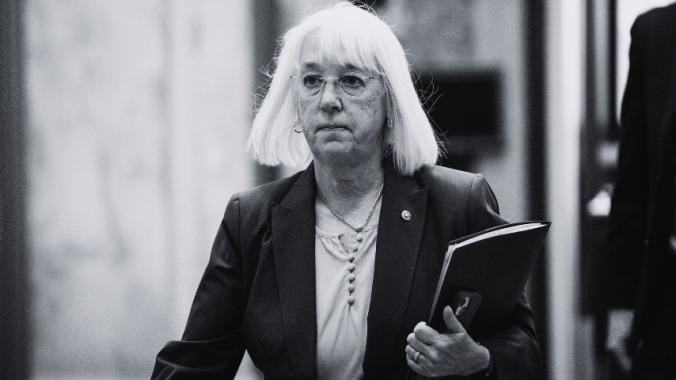Why Aren’t There Federal Workplace Protections for Domestic Violence Victims?
Sen. Patty Murray's new bill would establish paid leave, workplace protections, and unemployment benefits for domestic violence victims. Advocates call it the most ambitious federal effort yet to recognize domestic violence as an economic issue.
Politics
Over the last decade that Marium Durrani, vice president of policy at the National Domestic Violence Hotline, has spent providing legal advocacy to survivors, she’s heard harrowing stories from victims fearing not only for their physical safety, but often for their financial stability as well. She’s heard from survivors on the brink of losing health insurance and housing after leaving abusers; survivors who have lost jobs because of sabotage from abusive partners; survivors who’ve found themselves with no income or savings after exiting abusive relationships—including victims of financial abuse, like people whose exes took out loans or opened credit cards in their name without their consent. She’s heard from victims who have lost jobs because of all the court dates in domestic violence trials, and from victims dealing with medical debt incurred while treating abuse they’ve incurred.
“At the Hotline, we know acutely well how addressing the financial ramifications of violence is critical for survivors’ economic security, and not just that they might experience it during an abusive relationship, but will probably economically struggle while trying to leave, or for a long time after,” Durrani told Jezebel.
One in four American women will experience domestic violence. But there’s no federal policy on workplace discrimination against domestic violence survivors, nor workplace leave policy for those having to navigate the extensive fallout of experiencing abuse. In 2019, Sen. Patty Murray (D-Wash.) introduced the Security and Financial Empowerment (SAFE) for Survivors Act, but the bill received little national attention and never received a vote. Last week, Murray and fellow congressional Democrats introduced the SAFE for Survivors Act of 2024, which the Hotline endorsed alongside several other leading survivor advocacy organizations.
-

-

-

-

-

-

-

-

-

-

-

-

-

-

-

-

-

-

-

-

-

-

-

-

-

-

-

-

-

-

-

-

-

-

-

-

-

-

-

-








































